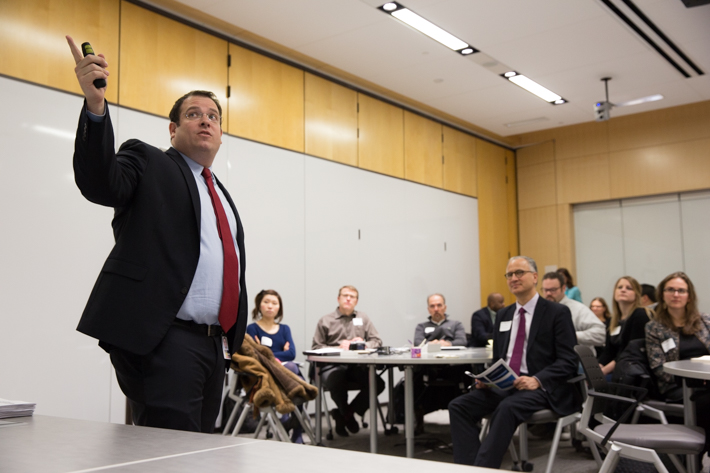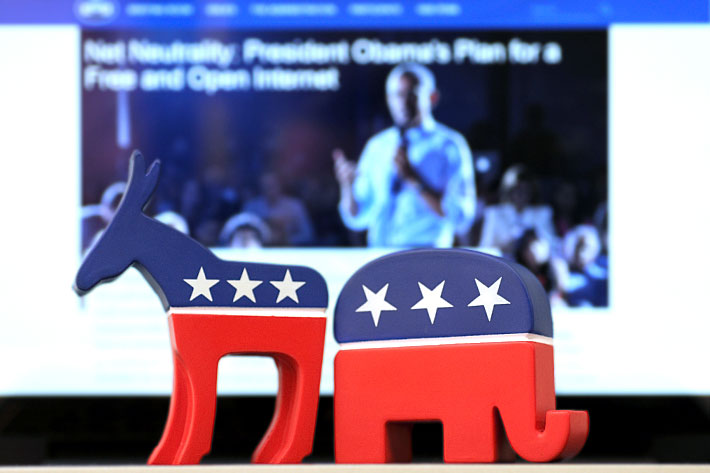By James Irwin
If you want to run an effective political campaign these days, you need to place a heavy emphasis on digital strategy. And that goes beyond just having a website and a Facebook page, says Ian Koski, communications director for U.S. Senator Chris Coons (D-Del.).
“What modern digital really comes down to is data, that’s the core of all of this,” Mr. Koski said Friday at the Shenkman Digital Strategy Boot Camp, hosted by the Graduate School of Political Management. “If your campaign is not using digital to influence voters, raise money, manage people, then you are doing it wrong.”
Speaking to a group of alumni as part of the two-day boot camp and expo, Mr. Koski, M.A. ’04, a GSPM adjunct faculty member, and Suzanne Zurn, M.A. ’99, vice president of DCI Group, facilitated discussions on digital strategy, analytics and building out an online engagement strategy. The two-day event, which also featured workshops, and networking opportunities for alumni and students, was sponsored by The Shenkman Initiative at the Graduate School of Political Management.
Digital, Mr. Koski said, must be at the forefront of any campaign. Tailored content, responsive websites, big and engaged email lists and strategies that mobilize supporters and persuade the target audience are just a few digital topics political operatives should be thinking about before the campaign even begins. Still, digital strategists often aren’t hired until after the campaign has started. That’s a bad move, he said.
“If you are running a campaign, please … bring your digital person to the table before you announce,” he said.
The reasons are intuitive, he explained. Announce without a website or a digital communications strategy, and you won’t be able to capture data, process donations or directly inform people about your candidate. The importance of digital in campaigns is clear, said GSPM Director Mark Kennedy. The school has continued to add digital courses to its curriculum, often co-taught by Democratic and Republican strategists, including one featuring Mr. Koski and Ms. Zurn.
“Digital is becoming increasingly important to the ability to communicate with any audience—certainly a political audience,” Mr. Kennedy said.
The Shenkman Initiative, established in 2013 after a donation from alumnus and Board of Trustees member Mark Shenkman, M.B.A. ’67, examines the best ways to combine statistical elements and algorithmic formulas in applied politics. The idea is to take big data and harness it as a tool for digital campaign managers.
What starts with data quickly transitions to the user experience, Mr. Koski explained.
The Coons campaign, he said, built a candidate site that functioned more like a mobile app than a desktop Web page. Reverse IP lookups—enabling digital strategists to determine the geographic location of site visitors—leads to tailored content. In the case of the Coons site, the IP address triggers different content for Delaware residents vs. non-residents. Residents—much like email subscribers—were encouraged to be advocates and help with canvassing. Non-resident action items were geared toward donations.
“Your online program is not about directly winning votes,” Mr. Koski said. “It’s about getting your people to go out and win votes for you. If people are on your email list, they are not undecided voters—they’re already with you. Give them the opportunity to influence others.”




